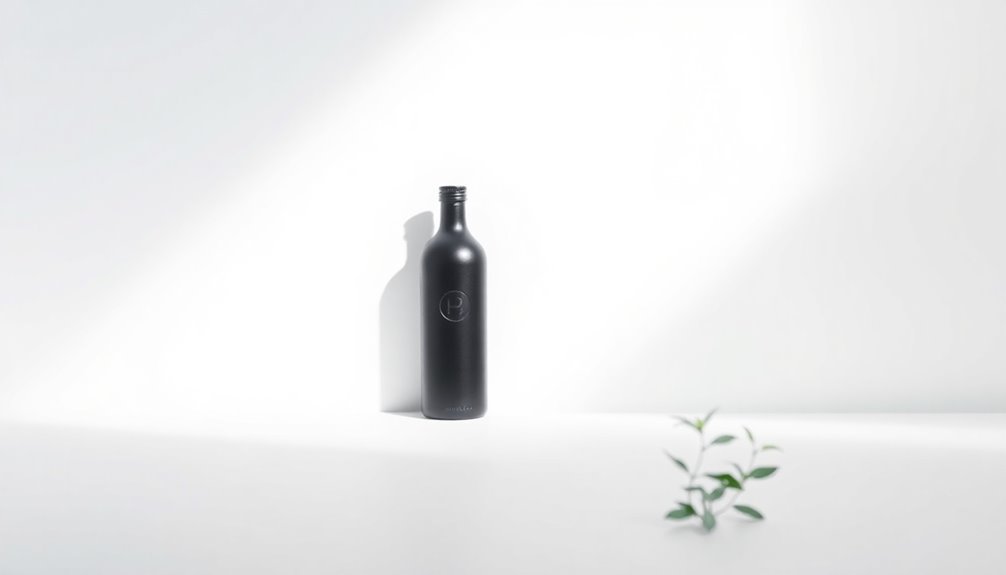Minimalist branding lets top brands cut through the noise by focusing on simplicity and clarity. By stripping away unnecessary elements, these brands communicate core messages effectively and create lasting impressions. This strategy enhances brand recognition and fosters authenticity, allowing consumers to connect faster. Brands like Apple and Muji illustrate that less can be more in creating a strong identity. Discover how to implement minimalism and see what works best to elevate your brand.
Key Takeaways
- Top brands like Apple and Muji utilize clean designs and limited color palettes to enhance brand recognition and communicate core values effectively.
- Minimalist branding reduces visual clutter, allowing consumers to process information quickly and focus on essential messages.
- A cohesive and simple typography approach strengthens brand identity, making it easier for consumers to recall and engage with the brand.
- Ample white space in designs creates balance, improving user experience and fostering a sense of calm that keeps consumers engaged.
- Successful minimalist brands differentiate themselves in cluttered markets by projecting authenticity, sophistication, and modernity through streamlined design elements.
What Is Minimalism in Branding?
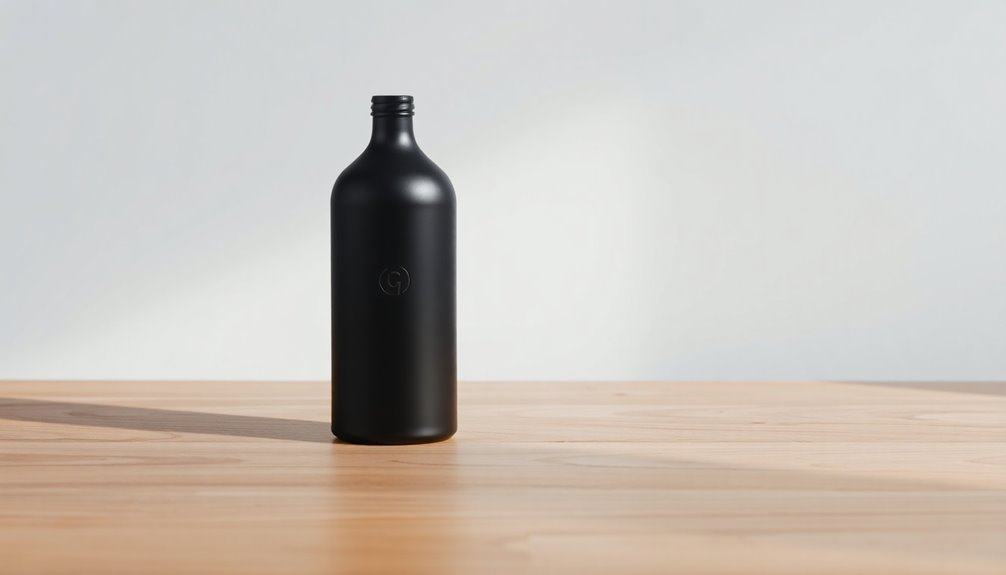
When you think about branding, minimalism strips away the unnecessary to reveal the essence of what a brand stands for.
Minimalist design focuses on simplicity and clarity, using limited color palettes and straightforward typography to enhance brand identity. By emphasizing essential elements over decorative features, brands can effectively communicate their core message without visual clutter.
This clean design not only improves brand recognition but also fosters professionalism and authenticity, building consumer trust.
Successful minimalist branding examples, like Apple and Muji, show how reducing distractions enhances user experience in both physical and digital spaces.
Adopting minimalist strategies can even boost revenue potential by up to 40%, as clearer messaging resonates in today's oversaturated market. Additionally, high-quality content plays a crucial role in reinforcing minimalist branding by ensuring that the message remains focused and impactful.
The Importance of Minimalism in Branding in 2024
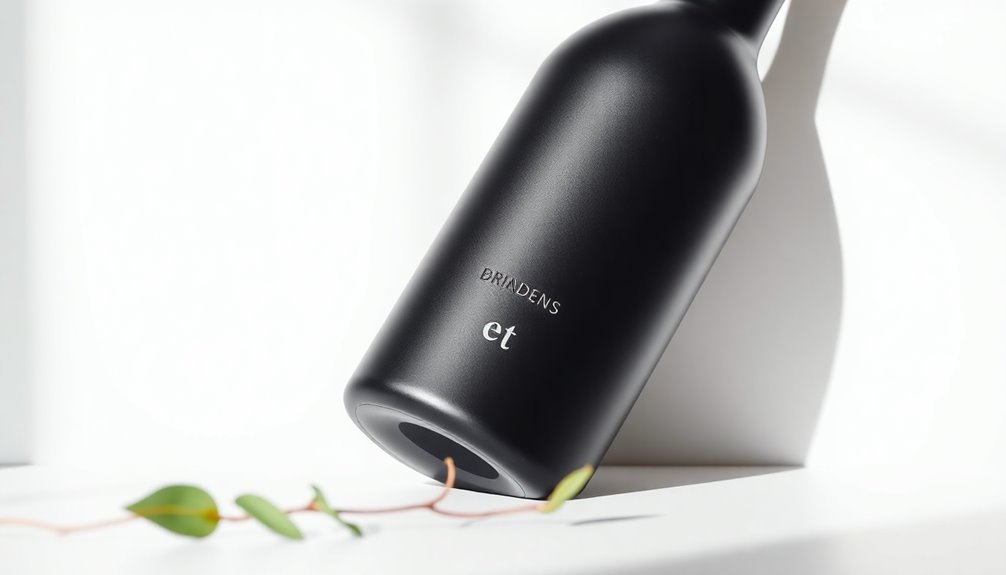
As the digital landscape evolves, minimalism in branding becomes increasingly vital for capturing consumer attention in 2024. A minimalist approach simplifies brand messaging, allowing you to convey core values and offerings quickly, which is essential in today's attention-scarce environment.
With the market saturated in cluttered design, adopting minimalist elements helps your brand stand out, creating lasting impressions through clean visuals. This clarity not only enhances versatility across digital and print formats but also fosters professionalism and authenticity, building trust with your audience.
Additionally, research shows that embracing minimalism can greatly improve user experience, as reducing distractions leads to more effective communication and higher customer satisfaction. Furthermore, positive thinking can enhance mental well-being and resilience, which are crucial for brands aiming to connect authentically with consumers.
In 2024, less truly is more when it comes to branding.
Examples of Minimalist Branding in 2024
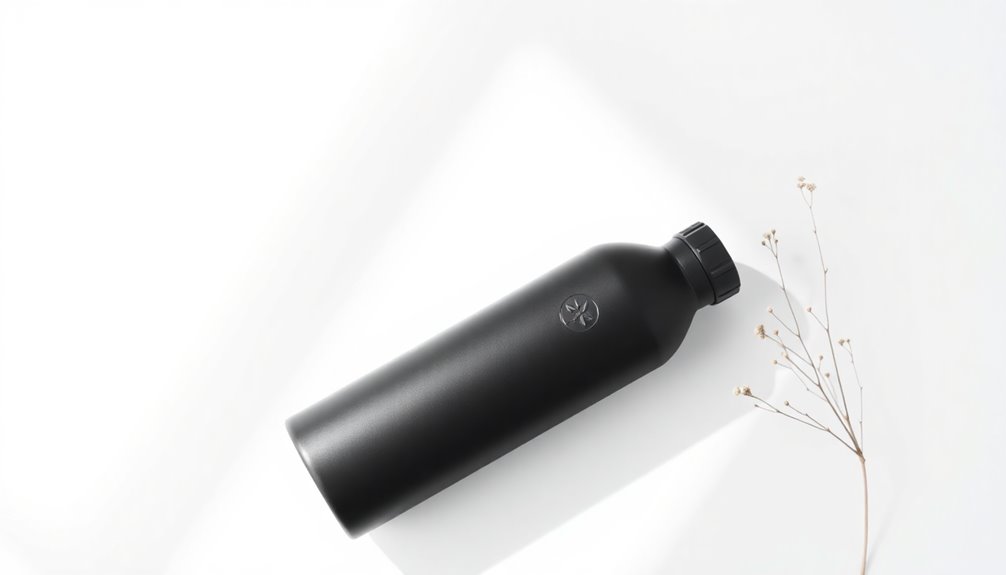
How does minimalist branding resonate with consumers in 2024? It's all about clarity and focus. Here are three standout examples:
- Apple – Known for its clean logo and sleek designs, Apple emphasizes functionality that enhances user experience.
- Muji – This brand offers practical products with little branding, appealing to consumers who value simplicity and sustainability.
- Nike – With its powerful "Just Do It" slogan, Nike uses concise messaging and stark visuals for strong brand recognition.
These brands effectively use minimalist principles to create a lasting impact. Their clean aesthetics not only differentiate them but also resonate deeply with consumers looking for authenticity and purpose in their purchases. Additionally, adopting mindfulness techniques can help brands maintain focus on their core message while fostering a strong connection with their audience. Embracing minimalist branding is a powerful way to stand out in a crowded marketplace.
Benefits of Minimalist Branding

When you embrace minimalist branding, you boost brand recognition by simplifying your design elements, making it easier for customers to remember you. This clarity not only enhances user experience but also encourages quicker decision-making. Ultimately, a clean, straightforward approach can set you apart in a crowded market. Additionally, curiosity fosters social connections that can help strengthen your brand's relationship with its audience.
Enhanced Brand Recognition
Minimalist branding considerably boosts brand recognition by simplifying visuals and messages, making them easier for consumers to remember.
Here's why you should consider it:
- Memorability: Brands with minimalist designs can enhance recognition by up to 40%, thanks to simpler visuals.
- Clarity: Clear brand messages allow consumers to quickly grasp your values, increasing engagement.
- Focus: White space enhances aesthetics and directs attention, making your brand more memorable.
Research shows that 75% of people recognize brands by their logos, and minimalist logos often use clean lines and limited colors for instant recognition. Additionally, the importance of clarity in branding aligns with the need for effective communication during global disruptions, emphasizing the value of straightforward designs.
Improved User Experience
Simplicity in branding not only boosts recognition but also considerably improves user experience. Minimalist design brings clean lines and uncluttered visuals, reducing cognitive load, which allows you to process information faster. This means you can navigate websites with ease, leading to quicker decisions and greater satisfaction. Brands adopting minimalist principles often see a significant increase in customer engagement, resulting in enhanced loyalty.
| Benefit | Example | Impact |
|---|---|---|
| Clearer Navigation | Simple menu structure | Faster loading times |
| Reduced Cognitive Load | Minimalist visuals | Easier information processing |
| Enhanced Brand Recall | Concise messaging | Higher memorability |
With a calm atmosphere, minimalist branding keeps you focused and engaged, making your overall interaction with the brand more enjoyable. Additionally, brands that emphasize consistent maintenance often establish a reliable image that resonates with customers.
How to Implement Minimalism in Your Branding
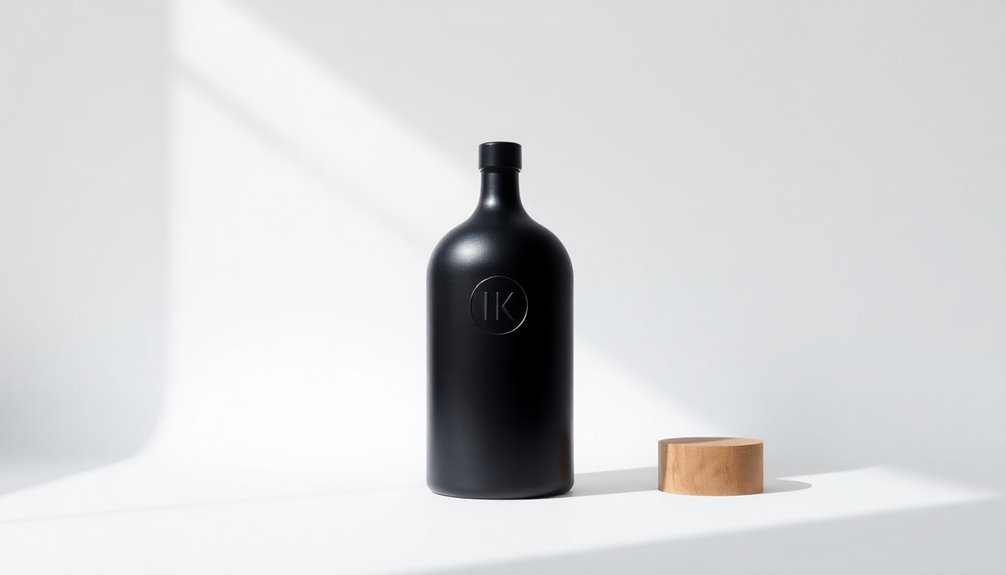
To implement minimalism in your branding, start by identifying the essential elements that truly represent your brand. Next, select a limited color palette that evokes the right emotions and ties everything together. Finally, simplify your typography to guarantee clarity and enhance your brand's message. Additionally, consider the importance of diversification strategy in your branding efforts to ensure a well-rounded and appealing presence in the market.
Essential Element Identification
When you're looking to implement minimalism in your branding, the first step is evaluating your core values and messaging. This helps you identify the essential elements that create a strong brand identity.
Focus on these three key aspects:
- Color Palette: Limit to 2-3 complementary colors for clarity and cohesion.
- Typography: Choose one or two clear fonts to maintain a minimalist aesthetic.
- White Space: Integrate ample white space to enhance balance and focus.
Regularly assess these elements to guarantee they align with minimalist principles, eliminating any unnecessary features. Additionally, consider the importance of branding in establishing a memorable connection with your audience.
Color Palette Selection
Choosing the right color palette is essential for establishing a minimalist brand identity that resonates with your audience. Aim for a limited palette of 2-4 complementary colors that reflect your core values.
This cohesion can boost brand recognition by up to 80%, making it easier for consumers to remember you. Consider the psychological significance of colors; for instance, blue conveys trust, while green evokes tranquility.
Pair your chosen colors with ample white space to enhance visual clarity, allowing consumers to focus on your key messages and product details. Additionally, ensuring color accuracy in your branding materials can further enhance visual appeal and consistency.
Brands like Apple and Muji illustrate how neutral tones and simple contrasts can create a clean, sophisticated visual identity that stands out while embracing minimalism.
Typography Simplification
Typography serves as the backbone of minimalist branding, where clarity and simplicity reign supreme.
To effectively implement typography simplification, consider these key strategies:
- Choose Sans-Serif Fonts: Opt for modern, easy-to-read fonts that enhance legibility across digital platforms.
- Limit Font Choices: Stick to one or two typefaces to create a cohesive brand identity, reducing visual clutter.
- Utilize White Space: Ample white space around your text improves aesthetics and guides viewers' eyes, making your message more digestible. Understanding the impact of different brewing methods on your audience can also inform your brand's messaging and design.
Design Elements in Minimalist Branding
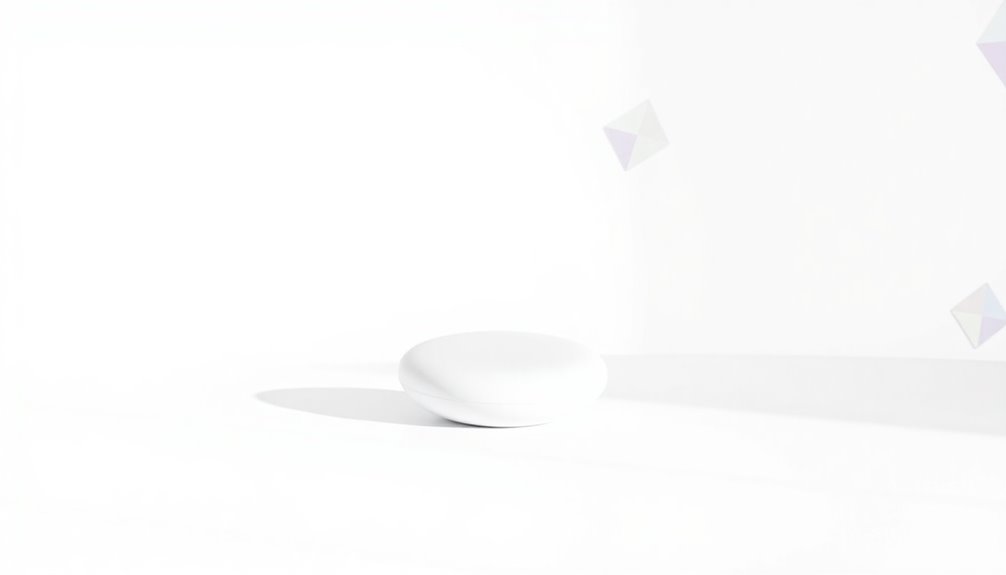
Minimalist branding thrives on simplicity, where every design element serves a purpose. A well-crafted minimalist logo, created with clean lines and limited color palettes, is essential for establishing a strong brand identity. Uncluttered design not only enhances visual clarity but also evokes emotional connections. The strategic use of negative space improves recognition, allowing your brand to stand out effortlessly.
| Design Element | Purpose | Emotional Impact |
|---|---|---|
| Minimalist Logo | Instant brand recognition | Trust and familiarity |
| Limited Color Palette | Convey brand values | Calmness and focus |
| Thoughtful Typography | Enhance communication | Clarity and elegance |
When Minimalism Works Best

Minimalism shines when your brand has a strong identity that stands out, like Apple's clean and memorable design.
It's especially effective in luxury markets, where brands like Chanel exude sophistication and exclusivity.
In tech, companies like Google use minimalism to project modernity and innovation, appealing to consumers who value a sleek approach.
Strong Brand Identity
Simplicity often breeds clarity, making strong brand identity essential in a crowded marketplace.
Minimalist branding helps you stand out by focusing on what truly matters. Here are three key benefits:
- Enhanced Brand Recognition: A clean, consistent design makes it easier for customers to remember your brand.
- User-Friendliness: Sleek, uncluttered designs improve the customer experience, making your product easy to navigate.
- Market Performance: Research shows brands with strong minimalist identities can outperform competitors by up to 214% in stock market performance.
Luxury Market Sophistication
When it comes to luxury branding, embracing a minimalist approach can greatly elevate a brand's perception.
Luxury brands like Chanel and Calvin Klein show how minimalist design conveys sophistication and exclusivity. Clean lines and neutral color palettes enhance the perceived value of products, appealing to discerning consumers.
Research indicates that minimalist branding can boost brand recognition by up to 40%, making it effective in the competitive luxury market.
Brands such as Gucci and Louis Vuitton benefit from improved customer engagement and loyalty through simplicity, which resonates with high-end clientele.
Tech Industry Modernity
Luxury branding's focus on minimalism has parallels in the tech industry, where brands like Apple and Google showcase modernity through sleek, user-friendly designs.
Embracing minimalism can enhance your marketing strategy, especially when targeting consumers who value efficiency. Consider these key points:
- Clean designs boost user engagement by up to 60%.
- Straightforward messaging fosters connection with a modern audience.
- Brands using minimalist approaches report up to a 40% increase in customer loyalty.
For minimalist brands, the aesthetic appeal isn't just about looks; it's a critical aspect of digital marketing that resonates deeply with users.
When Minimalism Falls Short

While minimalism often aims to create clean and memorable branding, it can sometimes lead to a homogenized look that causes brands to fade into the background.
Excessive minimalism risks oversimplification, diluting essential elements of brand identity. For example, the 2010 Gap logo redesign faced backlash for being overly simplistic, undermining its character.
Similarly, Jaguar's 2024 rebrand lacked excitement, stripping away the emotional connection consumers crave.
Tropicana's 2009 minimalist packaging caused confusion, leading to a rapid return to original designs.
When brands lose their distinctiveness, it's challenging for consumers to connect with and remember them.
Striking a balance between minimalism and individuality is vital for maintaining a strong brand identity in an oversaturated market.
Successful and Less Successful Examples of Minimalism
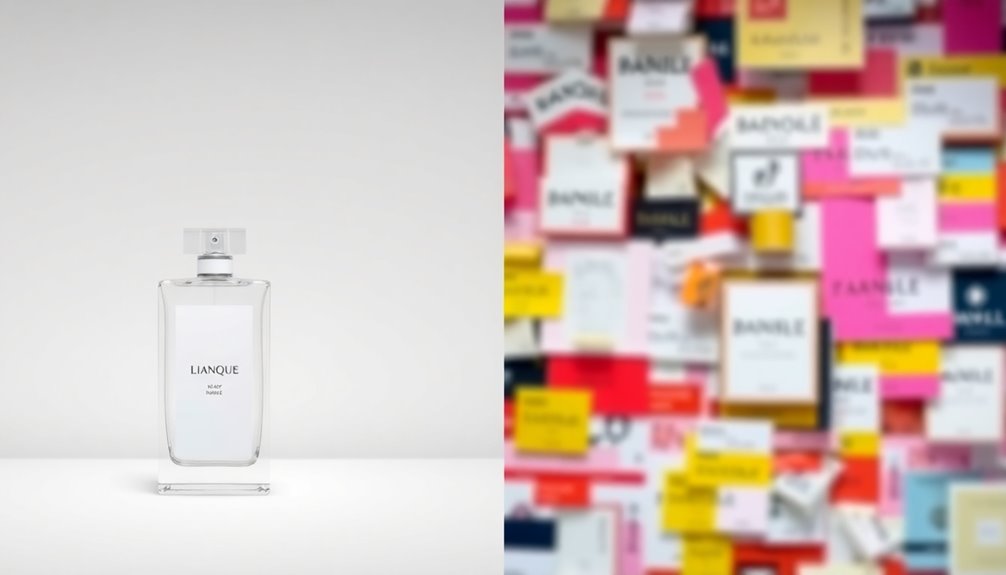
Minimalist branding can either elevate a brand's identity or diminish it, depending on how it's executed. Here are some successful and less successful examples to examine:
- Successful Examples: Apple and Muji showcase effective minimalist marketing, achieving high brand recognition and loyalty through clean designs and functional simplicity.
- Less Successful Examples: The Gap's 2010 logo redesign and Tropicana's 2009 packaging confused customers, diluting their brand identity and leading to negative backlash.
- Lessons Learned: While successful minimalist brands like Calm create lasting impressions, less successful attempts often result in a loss of identity.
Final Thought: Embracing Simplicity for Brand Success
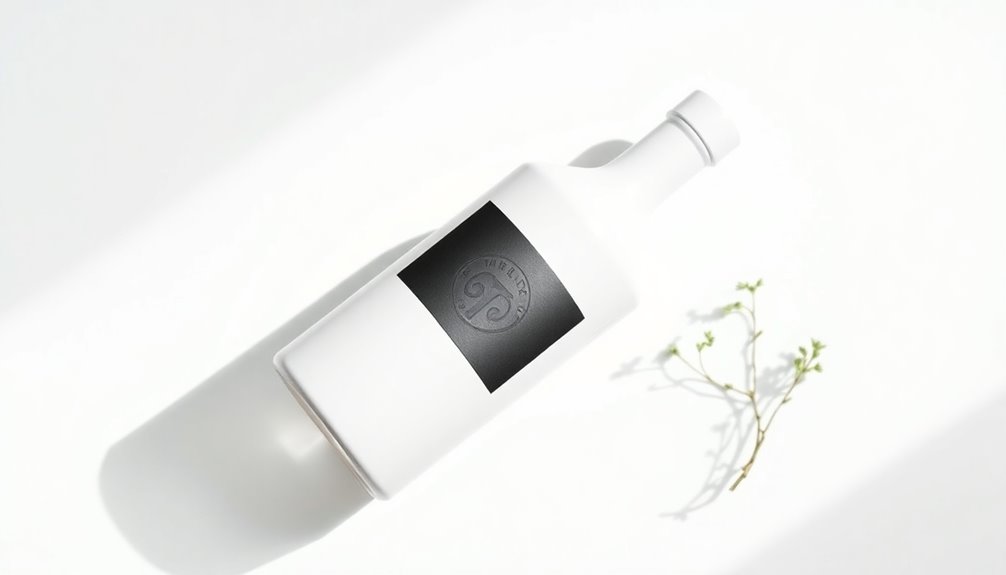
Embracing simplicity in branding can be a game-changer for your business. By recognizing the power of simplicity, you can enhance your brand's identity and foster deeper consumer engagement.
Brands like Apple and Muji show that focusing on essential elements rather than clutter leads to stronger connections with consumers. This minimalist approach not only simplifies decision-making for your audience but also improves recognition and recall.
In today's fast-paced digital landscape, reducing cognitive overload is vital. When you prioritize clear messaging and minimalist design, you position your brand for success, potentially increasing revenue by 40%.
Ultimately, a well-executed minimalist strategy can help your business stand out, outperform competitors, and build lasting loyalty among consumers.
Frequently Asked Questions
How Can Minimalism Improve Customer Loyalty and Trust?
When you embrace minimalism in your branding, you create clarity and focus that resonates with customers. They appreciate simplicity and find it easier to understand your message.
This straightforward approach builds trust, as it eliminates confusion and shows authenticity. By prioritizing essential elements, you foster a sense of loyalty, as customers feel connected to a brand that values their experience.
Ultimately, minimalism can enhance your relationship with your audience and encourage repeat business.
Is Minimalist Branding Suitable for All Industries?
Minimalist branding isn't a one-size-fits-all solution.
While it works wonders for tech and fashion industries by emphasizing sleek design and clarity, it may not resonate in sectors like food or healthcare, where richness and variety often attract customers.
You'll need to assess your target audience and brand message carefully.
If simplicity aligns with your values and appeals to your customers, then minimalist branding could be a strong choice for your industry.
What Are Common Misconceptions About Minimalist Branding?
You might think minimalist branding means stripping away personality, but that's a misconception.
It's not about being bland; it's about clarity and focus. Some believe it limits creativity, yet minimalism can actually enhance it by encouraging innovative solutions within constraints.
You may also assume it's only for luxury brands, but many industries can benefit from a clean aesthetic.
Understanding these misconceptions can help you leverage minimalist branding effectively for your own brand.
How Does Minimalism Affect Brand Storytelling?
Minimalism shapes brand storytelling by stripping away unnecessary details, allowing you to focus on core messages.
When you embrace simplicity, your audience can connect more easily with your brand's core nature. It creates a clear narrative that resonates, making your story memorable.
You'll find that using fewer elements lets your brand's personality shine through, enhancing emotional engagement and leaving a lasting impression.
Fundamentally, less really can be more in effective storytelling.
Can Minimalist Branding Be Combined With Vibrant Colors?
Imagine a sleek white canvas splashed with bold, electric blue.
Minimalist branding can absolutely embrace vibrant colors. You can create striking contrasts that draw attention while keeping your design clean and uncluttered.
By using vibrant hues sparingly, you highlight key elements without overwhelming the viewer.
This approach allows you to maintain simplicity while still making a memorable impact, ensuring your brand stands out in a sea of noise.
Conclusion
Embracing minimalism in your branding can feel risky, especially if you're worried about losing your unique flair. However, simplicity doesn't mean sacrificing individuality; it's about distilling your message to its essence. By stripping away the clutter, you can create a more impactful connection with your audience. Remember, less can truly be more—when done right, minimalist branding not only enhances recognition but also builds trust. So, go ahead and simplify; your brand's authenticity will shine through.
